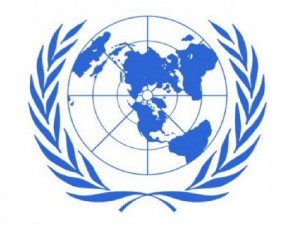PH among Asia Pacific countries with land use plans aimed at curbing disasters
MANILA, Philippines—The Philippines is one of at least 10 countries in the Asia-Pacific that have established long-term land use plans aimed at reducing vulnerability to disasters, among other things, according to two United Nations (UN) agencies.
The nine other nations cited by the United Nations for Disaster Risk Reduction (UNISDR) and the UN Economic and Social Commission for Asia and the Pacific (ESCAP) are China, Japan, South Korea, India, Bangladesh, Indonesia, Nepal, Thailand, and the Solomon Islands.
In their joint, 134-page Asia-Pacific Disaster Report 2012, the UNISDR and the ESCAP said these countries’ land use plans “provide overall geographic frameworks and locational policy directions to guide countries’ national development strategies.”
Aside from addressing disaster risk reduction, the same plans are intended to “address governance reform and poverty reduction,” said the report, also titled ‘Reducing Vulnerability and Exposure to Disasters.”
In the Philippines, it noted “there are two national plans which provide a strategic policy direction for disaster risk management.”
“One is the long-term National Framework for Physical Planning (NFPP), which runs from 2000 to 2030. This is complemented by the Philippine Development Plan, which is revised every six years and coincides with the political term of the country’s president,” it said.
“An important supplemental plan to the PDP is the Philippine Investment Plan (PIP), which guides national level investments related to disaster risk reduction and management,” it added.
Both the PDP and PIP are guided by the NFPP, which provides the parameters for the planned allocation, use and management of the country’s land and other physical resources,” the report said.
“As a national spatial framework, it is risk-sensitive in its land use policy guidelines, including those for the development of settlements, productive land use and infrastructure. For the development of settlements, it emphasizes the impacts of urbanization trends and stresses the necessity to identify disaster-prone areas,” it said.
At the same time, the framework requires the adoption and implementation of land use and zoning regulations that encourage the use of disaster mitigation, environmental protection and rehabilitation measures through the resulting economic commitments, said the report.
It also pointed out that “countries like Japan, the Philippines, South Korea and Thailand that have prepared a general framework plan at the national level, which is then replicated at regional scales and tailored to accommodate locally-distinctive contexts and visions.”
“Recently, development plans and land use strategies have been influenced by the concepts of resilience, climate change adaptation and in countries like China, India, Indonesia and the Philippines, inclusive growth is being pursued as a means to address the challenges of poverty reduction and the inequitable distribution of wealth between the rich and poor,” it added.
The UNISDR and ESCAP earlier cited the Philippines as one of four disaster-prone countries in the region that have reduced their vulnerability to disaster despite their poverty.
They also praised the Philippines as one of 18 countries in the Asia-Pacific that have disaster risk reduction part of development plans.
Like India, Pakistan, Bangladesh and Thailand, the Philippines has also “shown that well-targeted social protection measures are not only affordable, but they can also reduce vulnerability to disasters to a great extent.”
Earlier, its Making Cities Resilient Report, the UNISDR disclosed that Albay province and two other Philippine local government units—Makati City and San Francisco town on Camotes Island, Cebu—were now on its list of 29 model communities worldwide in disaster risk reduction and management.
These local government units have been cited for their “best practices” on a wide range of challenges, including flood management, early warning, earthquake reconstruction and legislation.
Meanwhile, Margareta Wahlstrom, UN Secretary General Ban Ki-moon’s special representative on disaster risk reduction, warned that “exposure to disaster risks is growing faster than our ability to build resilience….We are in a race against time.”
However, she said that “collective actions can mitigate disasters and protect our populations…Our shared challenge is to control both the growing rate of exposure and rising vulnerability.”















